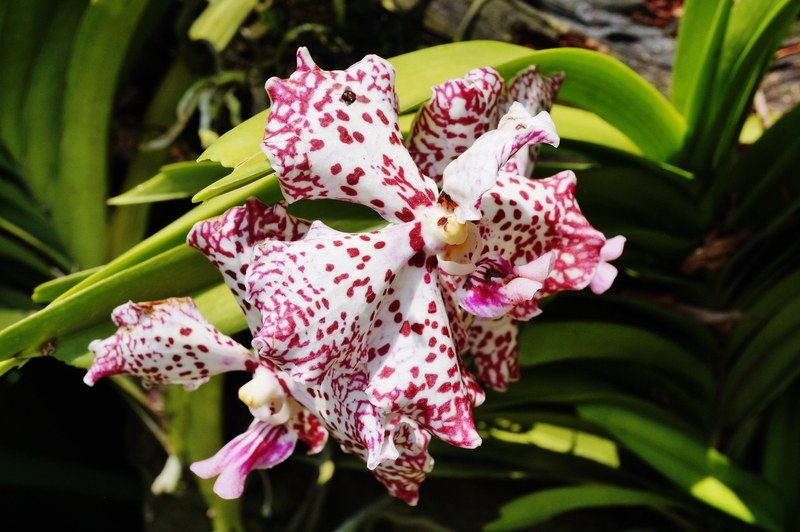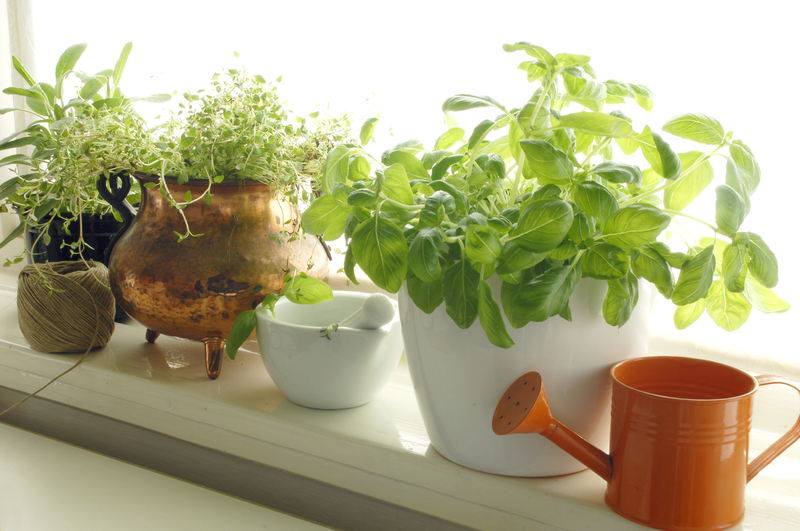Sprout a Garden that Dogs and People Enjoy
Posted on 01/06/2025
Sprout a Garden That Dogs and People Enjoy: A Complete Guide
Are you dreaming of a vibrant garden that appeals to both humans and their four-legged friends? It's not just possible -- it's incredibly rewarding. Imagine a backyard oasis filled with lush greenery, safe zones for your dog to play, and beautiful blooms that delight all visitors. This guide will show you how to sprout a garden that dogs and people enjoy together, balancing aesthetics, enjoyment, and safety while maximizing the joy for every member of your family.
Why Create a Dog-Friendly Garden?
Dogs are natural explorers, sniffers, and diggers. Unfortunately, their adventures can sometimes spell disaster for ornamental plants. At the same time, traditional gardening practices often introduce risks for pets -- toxic plants, sharp materials, and unsafe mulches, to name just a few.
The good news: you can absolutely design an outdoor space for dogs and people to enjoy in harmony. By careful plant selection, dog-friendly features, and clever landscaping, your backyard can be a safe haven and a delight for everyone.

Designing a Dog-Friendly Garden with People in Mind
The first step to sprout a garden both dogs and people enjoy is smart planning. Let's break down the basic principles that will make your family (furry and not) happy and safe:
Assess Your Space and Your Dog's Personality
Every garden, breed, and lifestyle is different. Before digging in, ask yourself:
- How big is your yard or outdoor space?
- How large is your dog? (A large, energetic dog may need more space and sturdier plants.)
- Does your dog like to dig, chew, or run?
- Are there favorite napping or sunning spots?
- How much time do you spend gardening or relaxing outside?
Knowing your dog's needs and habits will inform your landscape choices and help everyone enjoy the garden together.
Safety First: Choosing Dog-Friendly Plants and Materials
Not all garden plants are safe for pets. Some common flowers, shrubs, and even mulches can be highly toxic to dogs if ingested. When planning to create a garden dogs and people enjoy, prioritize non-toxic, hardy, and low-maintenance species.
Common Garden Dangers for Dogs
- Popular toxic plants: Azaleas, lilies, sago palm, foxglove, daffodils, oleander, and tulips.
- Problematic mulches: Cocoa mulch contains theobromine, which is poisonous to dogs.
- Chemicals: Avoid pesticides, herbicides, and fertilizers unless labeled pet-safe.
- Sharp edges and thorns: Roses, barberry, and cacti can injure playful pups.
Dog-Safe Plants
- Sunflowers (Helianthus)
- Snapdragons
- Marigolds (Tagetes)
- Camellia
- Bee Balm (Monarda)
- Fuchsias
- Rosemary, thyme, and other culinary herbs
- Ornamental grasses
- Magnolia
Always cross-check plant choices using reputable databases, like the ASPCA's list of toxic and non-toxic plants, before planting.
Pet-Friendly Mulches and Materials
- Cedar or pine bark: Less prone to mold and rot.
- Pea gravel or smooth river stones: Great for paths but ensure sizes are not a choking hazard.
- Wooden decking: Sealed and splinter-free is best for paws.
Landscape Design Elements for a Shared Outdoor Oasis
Pathways for Exploration and Play
Dogs love to roam and patrol. Design a sinuous path with curves and nooks around garden beds, giving your pup a route for sniffing and circulating. This also diminishes the urge to charge through delicate flower beds.
- Mark obvious "dog trails" with low fencing, stones, or plants.
- Use durable, cool surfaces like flagstone or pea gravel.
- Keep paths wide -- ideally 3-4 feet for larger breeds.
For a garden both dogs and people enjoy, paths also make strolling with your dog or hosting friends a pleasure.
Defined Zones for Play, Relaxation, and Planting
- Play zones: Designate a grassy area for fetching and rolling. Shannon-resistant turf like Bermuda or Kentucky bluegrass work well for heavy use.
- Chill-out areas: Place a shady bench or hammock with a view, and add a dog bed or outdoor mat nearby so your pup can relax by your side.
- Planting beds: Use raised beds or low borders to protect delicate plants and teach dogs where not to tread.
Water Features for Cooling Off
Dogs love to splash! Consider adding a shallow pond, dog wading pool, or a recirculating fountain that provides fresh running water. It's refreshing, fun for kids and pets, and enhances your garden's tranquility.
- Ensure any ponds are shallow with sloping exits, so dogs don't get trapped.
- Keep water clean to avoid algae and water-borne illnesses.
Sun and Shade: Balancing Comfort Year-Round
Just as people seek sunny spots in winter and shade in summer, so do dogs! Plant fast-growing trees (like redbud or dogwood), use trellises with non-toxic vines, or install a canopy to ensure both you and your pup can find shelter from the elements.
Secure Boundaries and Dog-Safe Fencing
- Fences should be tall enough to prevent escape (at least 4-6 feet, depending on breed).
- Check fences for gaps and sharp edges.
- Consider installing a dog window -- a bubble or mesh opening so curious pups can see out safely.
Engage the Senses: Flowers, Scents, and Textures for Every Species
A thoughtfully designed garden can be a sensory wonderland for dogs and owners alike. Here's how to create a rich, interactive environment:
Aromatic Plants for People and Pets
- Lavender: Beautiful and calming for humans; its scent can also help distract dogs from barking.
- Rosemary and thyme: Hardy, fragrant, non-toxic, and culinary!
- Catnip (Nepeta): Attracts cats but many dogs appreciate its scent too.
- Lemon balm: Pleasant for both dogs and people.
Place aromatic plants near human seating and areas where your dog naturally likes to lounge.
Texture and Groundcover Variety
- Creeping thyme: Tough, safe, and releases fragrance when walked on.
- Irish moss or chamomile: Soft padding for paws and bare feet alike.
- Mondo grass or blue fescue: Adds color and is resilient to occasional digging.
Visual Interest for All
- Choose a mix of perennials and annuals for year-round blooms.
- Attract butterflies and birds with coneflowers, bee balm, and sunflowers.
- Use containers -- they're mobile and great for keeping delicate or rare plants out of paw's reach.
Solving Common Dog Challenges in the Garden
A garden that dogs and people enjoy together should anticipate and redirect natural dog behaviors. Here are strategies for common pain points:
Digging
- Provide a dig zone: Fill a sandbox or loosened earth patch with favorite toys for supervised digging.
- Mulch trouble spots with rocks or heavy groundcovers.
- Increase enrichment: Plenty of puzzles, toys, and walks reduce destructive boredom.
Chewing
Many dogs like to chew on sticks or plants. Offer plenty of safe chew toys outside, and restrict access to any plants that could be harmful. Train your dog to 'leave it' by rewarding attention to appropriate items.
Keen Scenters and Sprayers
Male dogs sometimes mark new territory, especially around vertical surfaces. Use robust edging or non-absorbent materials. Dilute urine patches with water to minimize burn spots on grass.
Heavy Traffic and Wear
- Install stepping stones or gravel along common routes to guide traffic and prevent muddy paws.
- Reinforce beds with tough borders or fencing where your dog tends to leap or take shortcuts.
How to Sprout a Garden for Dogs and People, Step by Step
- Map Your Garden: Sketch zones for play, planting, and relaxing. Watch the path your dog usually takes and incorporate it!
- Select Safe, Durable Plants: Choose non-toxic, tough species that will thrive in your climate and withstand a bit of roughhousing.
- Lay Paths and Define Borders: Build physical and visual boundaries -- it helps both people and pets respect each other's spaces.
- Install Features: Add water bowls, shady spots, and safe chew or dig areas for your pup.
- Add Sensory Plants: Layer scents, textures, and colors that both dogs and people love.
- Monitor and Train: Reward your dog for respecting garden rules and redirect as needed. Over time, your dog will learn which areas are theirs to enjoy.
- Enjoy together: Spend time outdoors together, exploring and relaxing in your new shared haven.
Maintaining the Garden Both Dogs and People Enjoy
- Regular Checks: Inspect for holes, worn patches, or signs of plant damage and adjust as needed.
- Pruning: Keep plants trimmed to reduce hiding spots for pests and allow light and air flow.
- Rotate Toys and Features: Prevent boredom by periodically moving toys or adding new scents and textures.
- Use pet-safe organic fertilizers: Compost and natural amendments keep soil and grass healthy without risking pets' health.
- Stay flexible: Your garden will evolve as seasons and habits change -- adjust accordingly!

Tips for a Harmonious, Joyful Garden Experience
- Supervise dogs outdoors, especially if introducing new plants.
- Teach children and guests about the dog-friendly (and off-limits) zones.
- Celebrate successes -- a thriving garden and a happy, healthy pup!
Conclusion: Shared Happiness Grows in a Well-Designed Garden
A garden that dogs and people enjoy isn't just about compromise -- it's about creating an environment that enriches everyone's life. By choosing dog-safe plants, designing smart pathways, and providing plenty of stimulation and comfort, you'll sprout a paradise where human and canine companions connect, play, and relax all season long.
Ready to transform your space? With a little planning, a creative touch, and the tips above, your dream of an outdoor haven for both dogs and people is within reach. Happy gardening -- and tails up!



